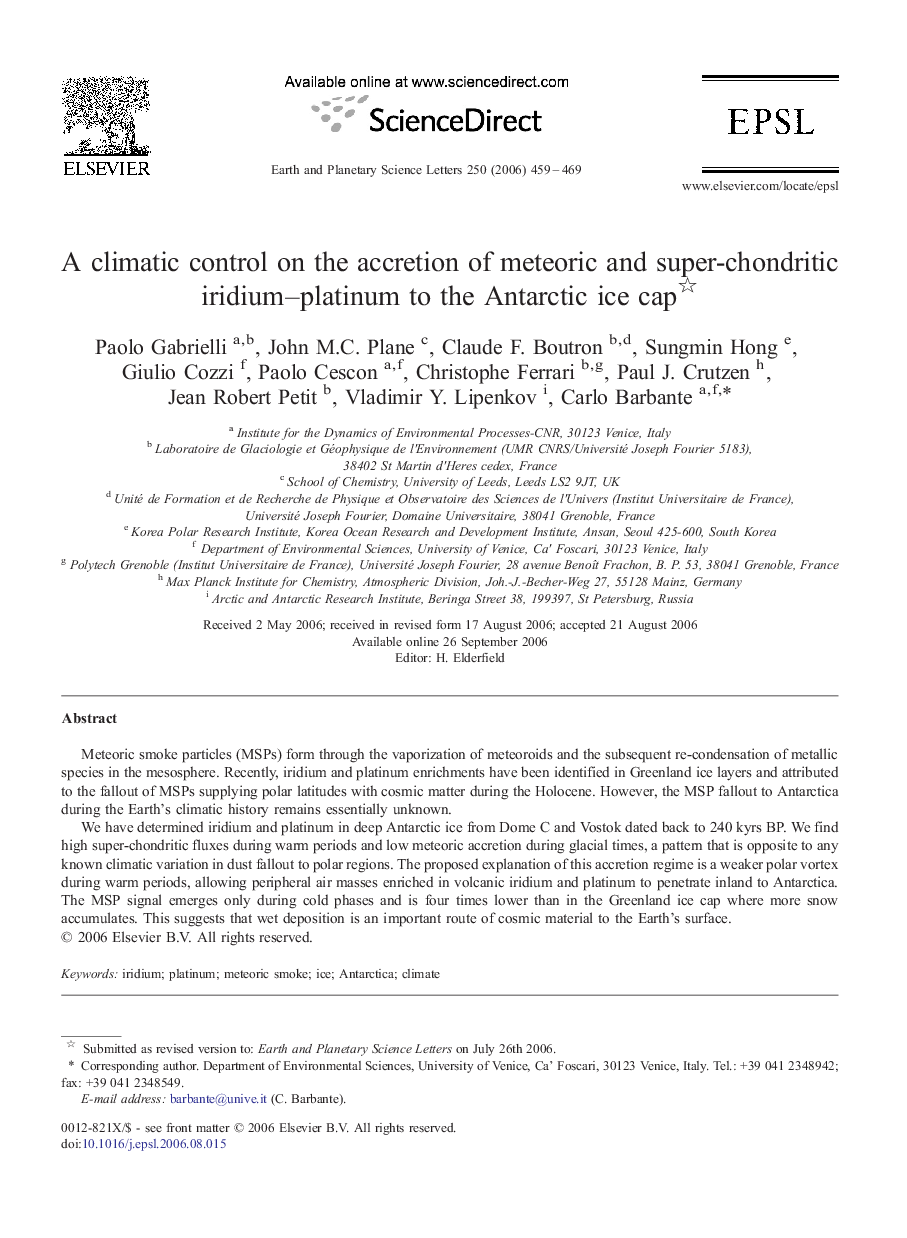| Article ID | Journal | Published Year | Pages | File Type |
|---|---|---|---|---|
| 4680983 | Earth and Planetary Science Letters | 2006 | 11 Pages |
Abstract
We have determined iridium and platinum in deep Antarctic ice from Dome C and Vostok dated back to 240Â kyrs BP. We find high super-chondritic fluxes during warm periods and low meteoric accretion during glacial times, a pattern that is opposite to any known climatic variation in dust fallout to polar regions. The proposed explanation of this accretion regime is a weaker polar vortex during warm periods, allowing peripheral air masses enriched in volcanic iridium and platinum to penetrate inland to Antarctica. The MSP signal emerges only during cold phases and is four times lower than in the Greenland ice cap where more snow accumulates. This suggests that wet deposition is an important route of cosmic material to the Earth's surface.
Related Topics
Physical Sciences and Engineering
Earth and Planetary Sciences
Earth and Planetary Sciences (General)
Authors
Paolo Gabrielli, John M.C. Plane, Claude F. Boutron, Sungmin Hong, Giulio Cozzi, Paolo Cescon, Christophe Ferrari, Paul J. Crutzen, Jean Robert Petit, Vladimir Y. Lipenkov, Carlo Barbante,
